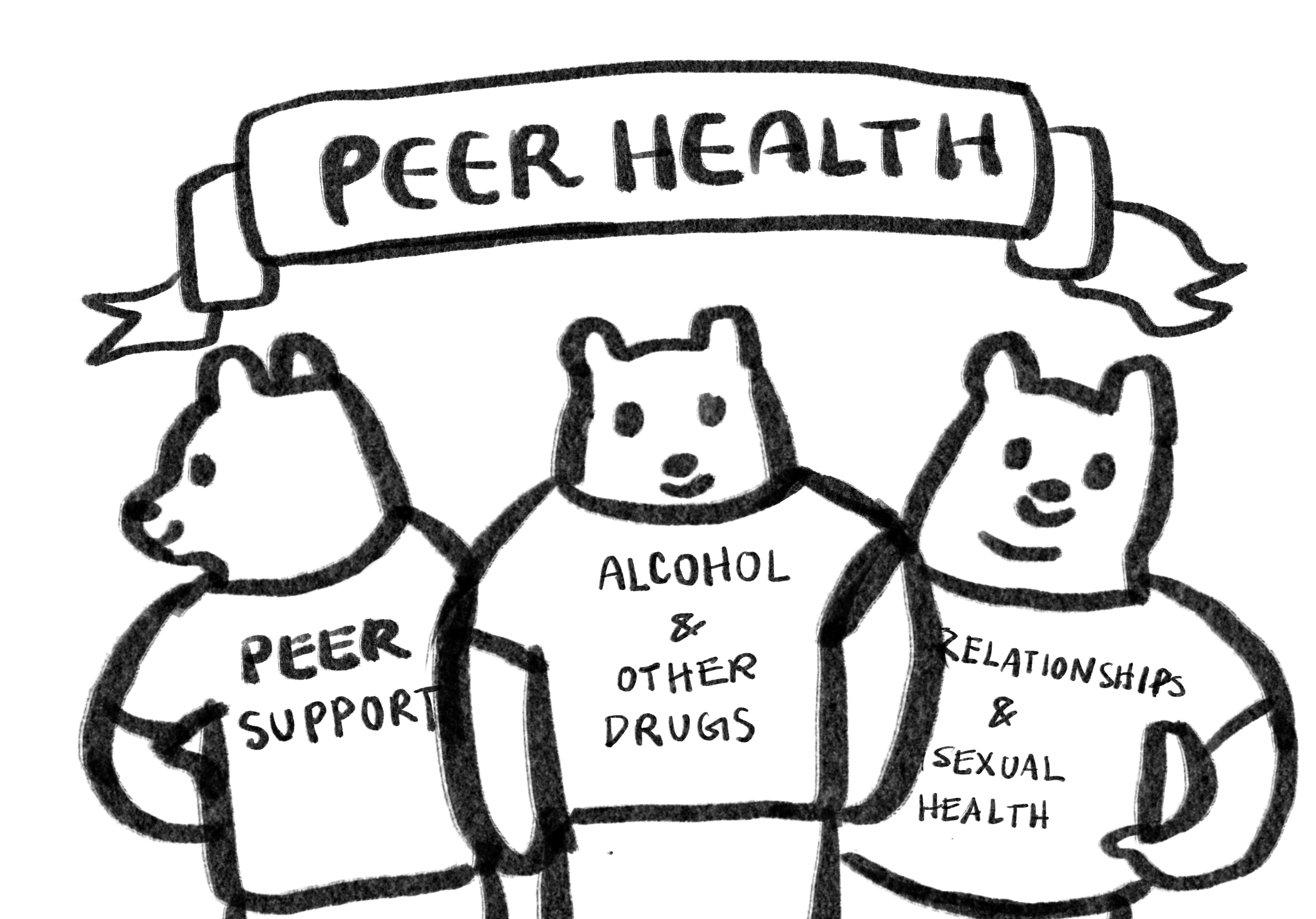Peer Health changes structure, aims to be more accessible
October 28, 2022
 Kyra Tan
Kyra TanThe structure of Peer Health at the College looks different this year than in years past. The change comes as the volunteer student group attempts to shift from its historic independence from the College and internal approach to programming to a more intentional partnership with Residential Life in order to cultivate a unified front to support students.
Whereas Peer Health mentors used hold mandatory, individual meetings with assigned floors and students, this year mentors hope to be available as an additional and less formal resource for the floor as a whole, similar to a Residential Assistant. The mentors hope this will make relationships between them and first year students more organic and tailored to personal needs.
“I think this year, it’s a lot more like you can make your relationships specific to your floor instead of a one-size-fits-all,” Sophia Tottene-Darvas ’25, who is in her first year as a peer health mentor, said.
Peer Health’s mission is multi-dimensional and it aims to tackle common issues that students might encounter daily. Opposed to last year’s collective approach to programming, the group has now divided into three committees focused on addressing specific topics: Relationships and Sexual Health, Alcohol and Other Drugs and Peer Support. This multi-pronged approach allows the organization to reach all students in a focused way and with programming developed by each group for its unique topic. Programming ranges from last year’s Sex Fest to workshops on responsible alcohol consumption.
“I feel like my role as a mentor within the Bowdoin community is to be a guide in terms of health and wellness, and really advocate for those opportunities that are on campus that a lot of people don’t know about,” Henry Somerby ’23, a member of the Peer Health leadership team, said.
Somerby feels that this change has better equipped Peer Health members to be valuable resources, as well as friendly faces, on campus.
“We’re working more with ResLife, and we’re just trying to be another addition or resource on the floor,” he said. “It’s opened us up to focus a lot more on programming too, and we’ve been focusing on just showing up for first-year dorms.”
For him, this means attending weekly flinners for his assigned floors and planning events such as Plan B Day, where contraceptives and other sexual health resources were distributed to students.
Prior to this year’s restructuring, first-years often expressed that their Peer Health mentor was less accessible and that peer-to-peer conversations were less regular and, subsequently, felt less natural.
“This year, I’m feeling very helpful because last year, Peer Health didn’t have all that much of a presence,” Tottene-Darvas said. “I think it … varied floor to floor.”
Last year, Peer Health mentors were less involved with their assigned floors, making individual interactions less meaningful. Now, mentors are more involved and conversations can go further.
“I like how it works now, especially in comparison to what used to be happening,” Somerby said. “It feels like we are more free to do what we want, and anything we can to help the student body.”
Pablo Patel ’23 has been a proctor for two years, and he hasn’t noticed much change for ResLife since the Peer Health changes. But he noted the closer relationship between Peer Health and ResLife present this year.
“I feel like last year, Peer Health felt very separated, and this year, I feel like they’re doing a lot more advertising in terms of ‘these are the events we’re doing’ and having us reach out to our first-years,” Patel said.
The increased involvement helps take pressure off of both sides, as both organizations can collaborate to solve issues, using their overlapping skill sets. Patel noted the different training both groups undergo, and how that plays a role in relationships with first-years.
“I think [ResLife] has some training in mental health and sexual health and just general health,” Patel said. “[Peer Health] training is far more localized with health related things, so I am hoping my first-years can reach out to them if any problems ever occur.”
The resources do not go unnoticed. Though Courtney Burnett ’26 hasn’t interacted much with her Peer Health mentor, she still noted feeling supported. She and her Peer Health mentor met briefly during the beginning of classes, and she was offered information about Peer Health programming and what the organization does.
“I feel like the talk we had at the beginning made me feel really secure about the resources we have here,” Burnett said.
The integration of Peer Health mentors on first-year floors is a move to open up consistent and meaningful connections between classes that go beyond the surface level.

Comments
Before submitting a comment, please review our comment policy. Some key points from the policy: